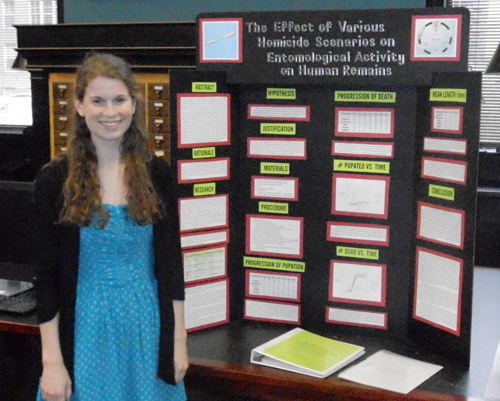 Christina Kelly with her Calvert Award winning project on Forensic entomology. |
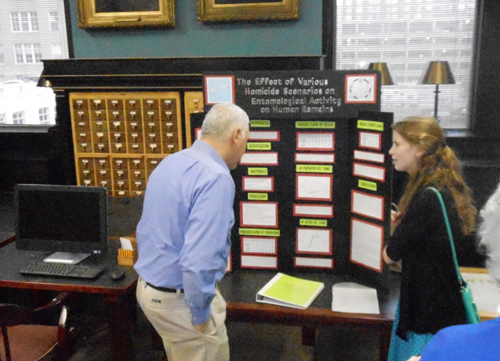 Christina Kelly discussing her project with Charles Mason, past president of AES. |
This
year, the 27th
Calvert Award was presented to Christina
Kelly, from Springfield,
Pennsylvania, an eleventh grade student at Springfield High School. Her
project
was entitled, “The effects of
various homicide scenarios on the entomological activity on human
remains.” Christina has done science projects
on different aspects of forensics for several years. Her project this
year posed the question of whether growth of carrion-feeding insects
depends on the
method of disposal of a surrogate food source. It was selected from
among 15
insect-related science projects presented at the annual Delaware Valley
Science
Fairs held April 3 at the Philadelphia Expo Center in Oaks, PA. Judges
included Hal White, Greg Cowper, Larry Henderson, Matt White, and
Melissa Richard.
Three other students
received recognition for their insect-related science projects spanning
Zoology, Physics and Computer Science. Prize winners included Monica
Ting,
(second place), an eleventh
grade student from Holmdel, NJ, who studied, “Understanding the surface
nanostructure of Morpho and Pieris butterfly
wings.” She was interested in whether an understanding of how
microscopic
physical structures that create iridescent wing colors could be
mimicked in food
such as chocolate. Kerri Diamond (third place), a ninth grade student
from
Souderton, Pennsylvania, received recognition for her project on, “The
virtual swarm: Which insect’s
food-finding method is most effective.” Her project involved generating
computer
programs that modeled the behavior of foraging insects. Kerri also
received the
overall top prize for ninth grade projects at the Delaware Science
Fairs.
Regina Reynolds of Wilmington, DE, received honorable mention for her
project, The foraging
behavior of the honey bee.” She studied the whether honey bees
recognize
certain shapes as cues for returning to food sources.
 Christina Kelly with her Calvert Award winning project on Forensic entomology. |
 Christina Kelly discussing her project with Charles Mason, past president of AES. |
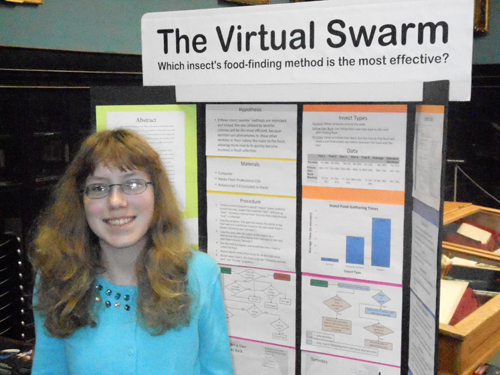 Kerri Diamond with her third place project for the Calvert Award. |
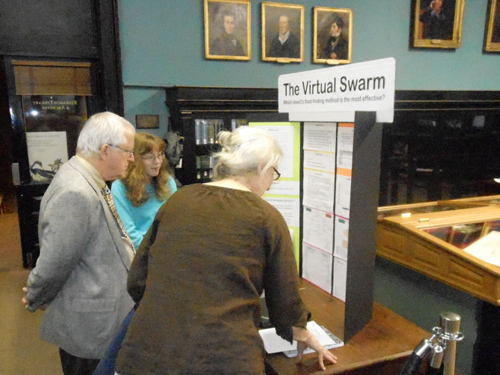 Kerri Diamond discussing her project with Jamie Cromartie, AES president, and Susan Frank. |
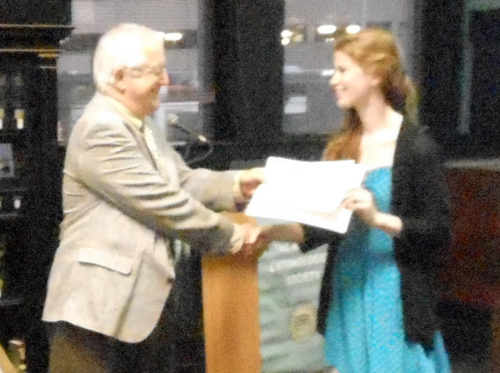 Christina Kelly receiving her the Calvert Award certificate from Dr. Jamie Cromartie. |
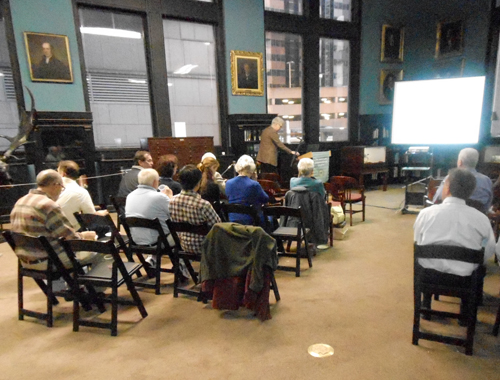 AES membership meeting in the library of the Academy of Natural Science of Philadelphia. |
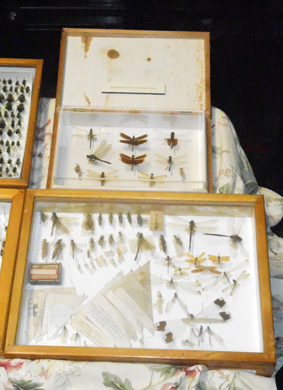 Display of specimens in the Academy collection that were collected by P. P. Calvert |
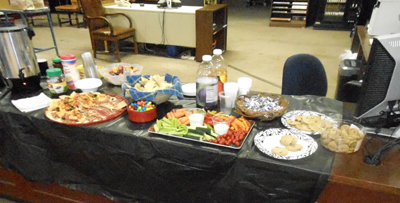 Nourishment for the evening. |